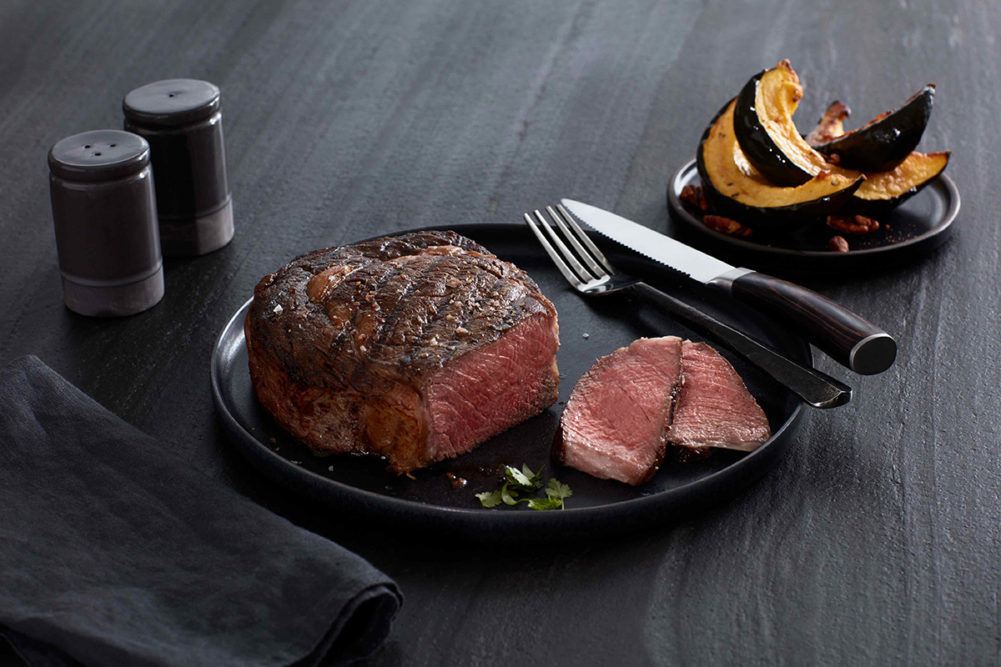KANSAS CITY, MO. — For many meat and poultry suppliers and their retail partners, finding the sweet spot between premium and affordable will be paramount going forward.
Kent Harrison, vice president of marketing and premium programs for Tyson Foods, Fresh Meats, said Tyson’s Chairman Reserve Platinum Angus Beef is one such flexible option.
“It provides consumers a lower price point than some cuts of prime beef, while still offering a premium eating experience,” he said.
Tyson has also found that consumers are looking to find creative ways to stretch their dining budget by preparing restaurant-quality meals at home. The Chairman’s Reserve Meats brand does that and is backed with name-brand recognition and expert marketing support to inspire shoppers and build trust, resulting in higher basket rings, he said.
As consumers face inflation, it’s critical that packers and retailers focus on providing value to their customers, said Michael Uetz, principal of Midan Marketing.
How consumers define value can vary widely, Uetz said. Some shoppers consider low-cost grinds and roasts to represent the best value, while others look to things like Wagyu and USDA Prime for assurance they’re getting their money’s worth.
While inflation is troublesome, Uetz said, it’s important to keep things in perspective.
The US Bureau of Labor Statistics’ October 2022 Consumer Price Index report, for instance, showed food as a whole at 10.9% inflation, but the meat category as a whole was just 2.9%.
Some meat categories are seeing an ease in inflation pressures, while others are still seeing it grow. October CPI for beef was down 3.6% year over year, but poultry was up 14.9% and pork up 4% year over year.
Right-sized
Another trend meat and poultry suppliers and their retail partners will be keeping a close eye on in 2023 is the evolution of packaging sizes.
“It will increasingly be important for retailers to supply case ready offerings that include smaller portion sizes for consumers,” Harrison said. “Case-ready value-added products have seen tremendous growth over the past decade, and we don’t foresee demand slowing down in 2023.”
According to the 2022 National Meat Case Study, case ready makes up 83% of packages in the meat case. Case-ready products, Harrison said, help consumers who are searching for flavor and convenience. It also streamlines operations for the retailer by reducing waste, increasing food safety and consistency, and helps reduce out of stocks. As more retailers add case ready packaging to their meat case, Harrison said, its compact design makes it easily identifiable for consumers.
“The material used in case ready packaging can be printed with a brand’s product claims, nutritional benefits and preparation tips. It’s also easier for retailers to stock. We also know that consumers are being intentional when shopping the meat case; they are seeking out brands and products featuring on-pack claims that reflect their values.”
Faster, easier and more flavorful meal solutions will rule the meat case in the near term, Uetz said.
“Consumers became confident in the kitchen in the last few years, and now as they resume their normal, busy routines, many still want to cook for their families.”
Value added fresh meats offer the flavor and convenience they’re looking for, he added. Smaller cuts are great fits for kitchen appliances like air fryers, which many consumers became more familiar with during the pandemic.
That said, Midan is also keeping a close eye on the popularity of value-priced larger cuts, like roasts, which continue to grow sales. A roast, while a large purchase, can provide several meals to inflation-conscious shoppers.
Healthy options
For the past few years, Harrison said, consumers have been focused on illness prevention. Now, the focus has shifted to an increased awareness of diet and nutrition.
“Consumers are becoming more educated about what is in their food and the amount they are eating. Focusing on high protein, clean ingredients, and portion sizes, will help meat producers respond to consumer health concerns in 2023.”
Tyson’s Open Prairie Natural Meats brand exists to provide consumers a wholesome and responsible protein choice, Harrison said, categorizing the line as a “nothing added, never ever protein choice that you can feel good about.”
When it comes to health, consumers continue to seek high-quality protein sources, creating a huge growth opportunity for the meat industry, Uetz said.
One way to tap into it, he said, is to borrow an idea from other grocery departments.
“Center-of-the-store brands prominently showcase protein content on the front of their packages to call out health-focused attributes such as high protein, and to capture this market, meat companies should do the same,” he said. “Meat and poultry products are one of nature’s most nutrient dense food offerings, and the meat industry needs to do a much better job of owning this fact.”



